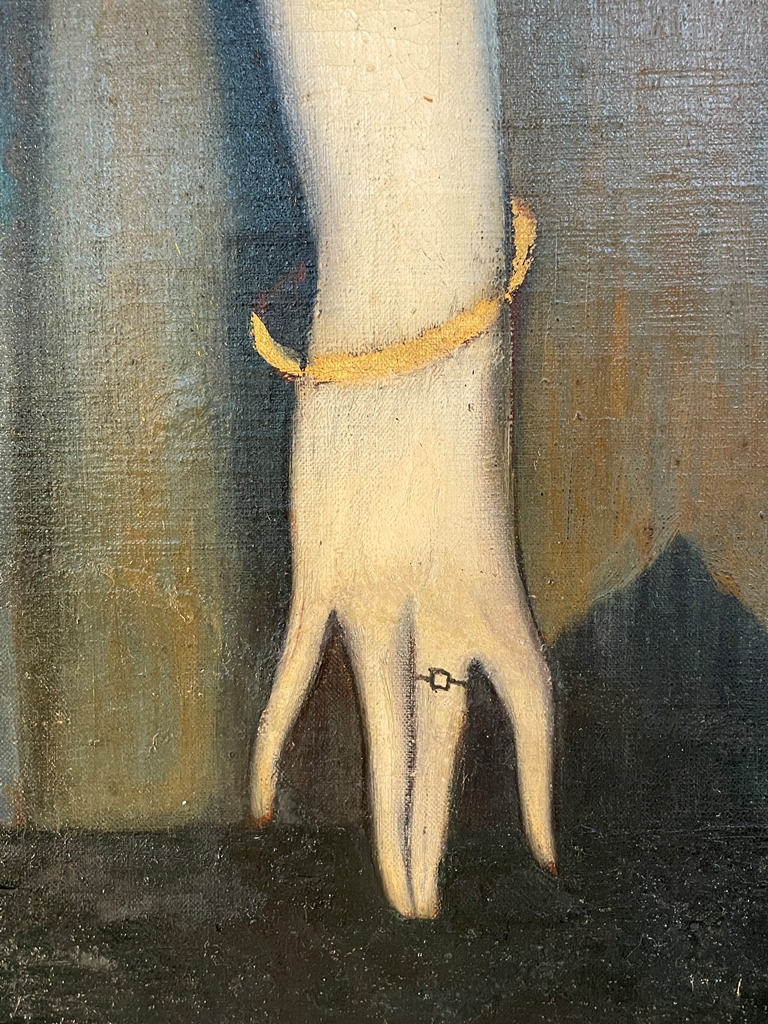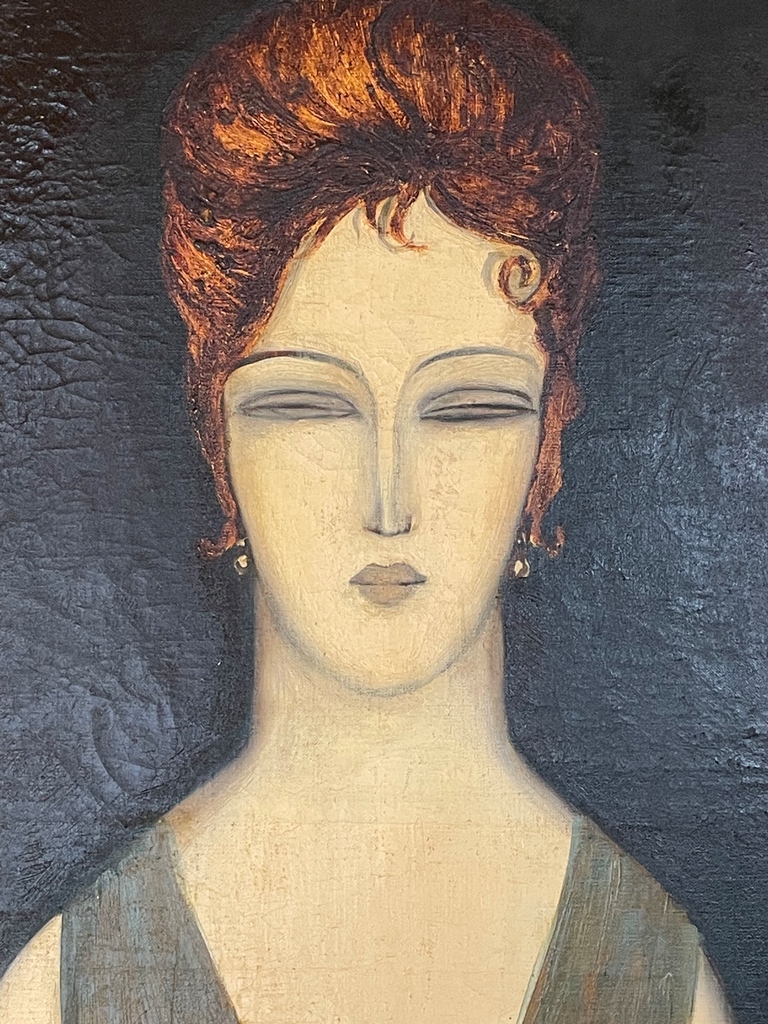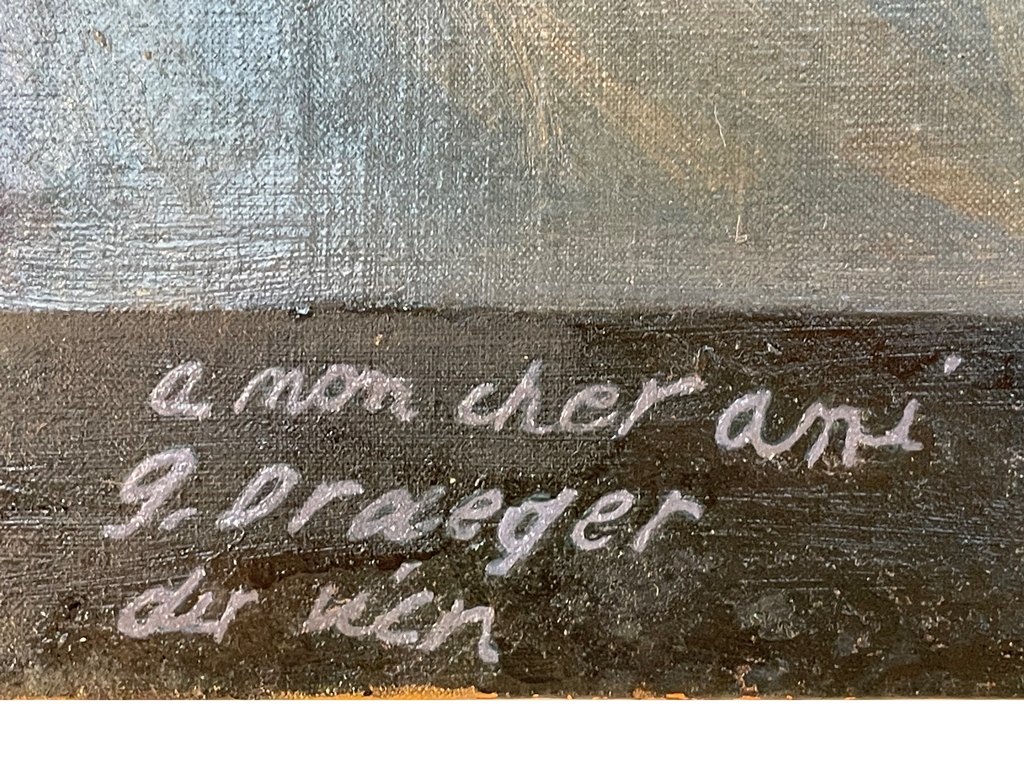Art Deco paintings,sold
Nr. 2512 |
Art Deco paintings
Inscribed: “A mon cher ami G.Draeger du rien” Eduardo Garcia Benito, called: BENITO (1891-1981) Oil on canvas. Lady in green dress, fingertips placed on edge of table. In the background, a light blue fur draped over an armchair against a blue wall.
No. 2512
Height: 100 cm | Width: 50cm
Art Deco paintings
Embark on a richer exploration of Eduardo Garcia Benito’s captivating Art Deco painting as we delve into the artist’s fascinating background. Known as “Benito,” he was born in Spain in 1891 and left an indelible mark on the art world until his passing in 1981. While his main focus was on illustration, a medium that allowed him to showcase his unique artistic vision, these two paintings stand as testament to his versatility and mastery as a painter.
The inscription, “A mon cher ami G. Draeger du rien,” gains even more significance as we learn that Benito dedicated these paintings to the entrepreneur Georges Draeger in Paris. This connection adds a layer of personal and historical context, providing insight into the collaborative spirit between the artist and the entrepreneurial endeavors of Draeger. Notably, both Benito and Jean Cocteau collaborated with Draeger in his printing factory, a space that witnessed the convergence of artistic minds during the vibrant Art Deco era.
As an illustrator, Benito’s talent extended beyond the canvas, and these two paintings, with their Cubist-inspired figures, reveal the influence of his work in the realms of fashion and illustration. The compositions evoke the spirit of Cubism, with mask-like faces reminiscent of Modigliani’s paintings. The slim, elongated bodies portrayed in the paintings echo the iconic fashion drawings found in “La Gazette du Bon Ton,” a prestigious French fashion magazine. In collaboration with Jean Cocteau, Benito contributed illustrations for fashion luminaries like Jeanne Lanvin, leaving an indelible mark on the world of haute couture.
The synergy between Benito’s illustrations and the paintings in question becomes apparent, as the Cubist influence seamlessly marries with the sleek elegance of Art Deco. These paintings not only serve as visual delights but also encapsulate the dynamic interplay between various art forms during the vibrant 1920s and 1930s.
In essence, Eduardo Garcia Benito’s paintings become a window into a world where illustration, painting, and fashion converged. The dedication to Georges Draeger deepens the narrative, emphasizing the interconnectedness of art, entrepreneurship, and collaboration during the heyday of Art Deco. As we admire these paintings, we are not just witnessing a moment frozen in time; we are immersing ourselves in the rich tapestry of artistic expression, where Benito’s legacy continues to shine as a beacon of creativity, transcending both time and medium.
To impress even a little more lets put this Art Deco pair of pedestals right and left from this paintings.
RSA Antiquitäten Wiesbaden
You can find more Art Déco furnishings such as Art Déco dining tables, Art Déco mirrors and Art Déco cabinets in our owner-managed specialist shop for antiques – especially Art Déco – in Wiesbaden.







